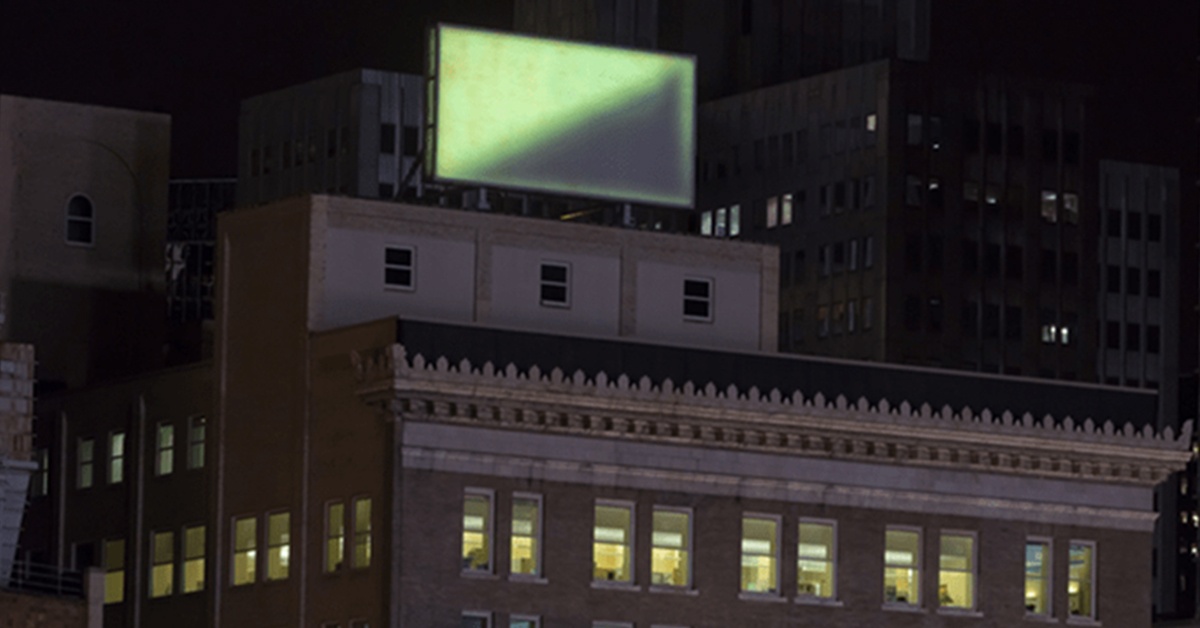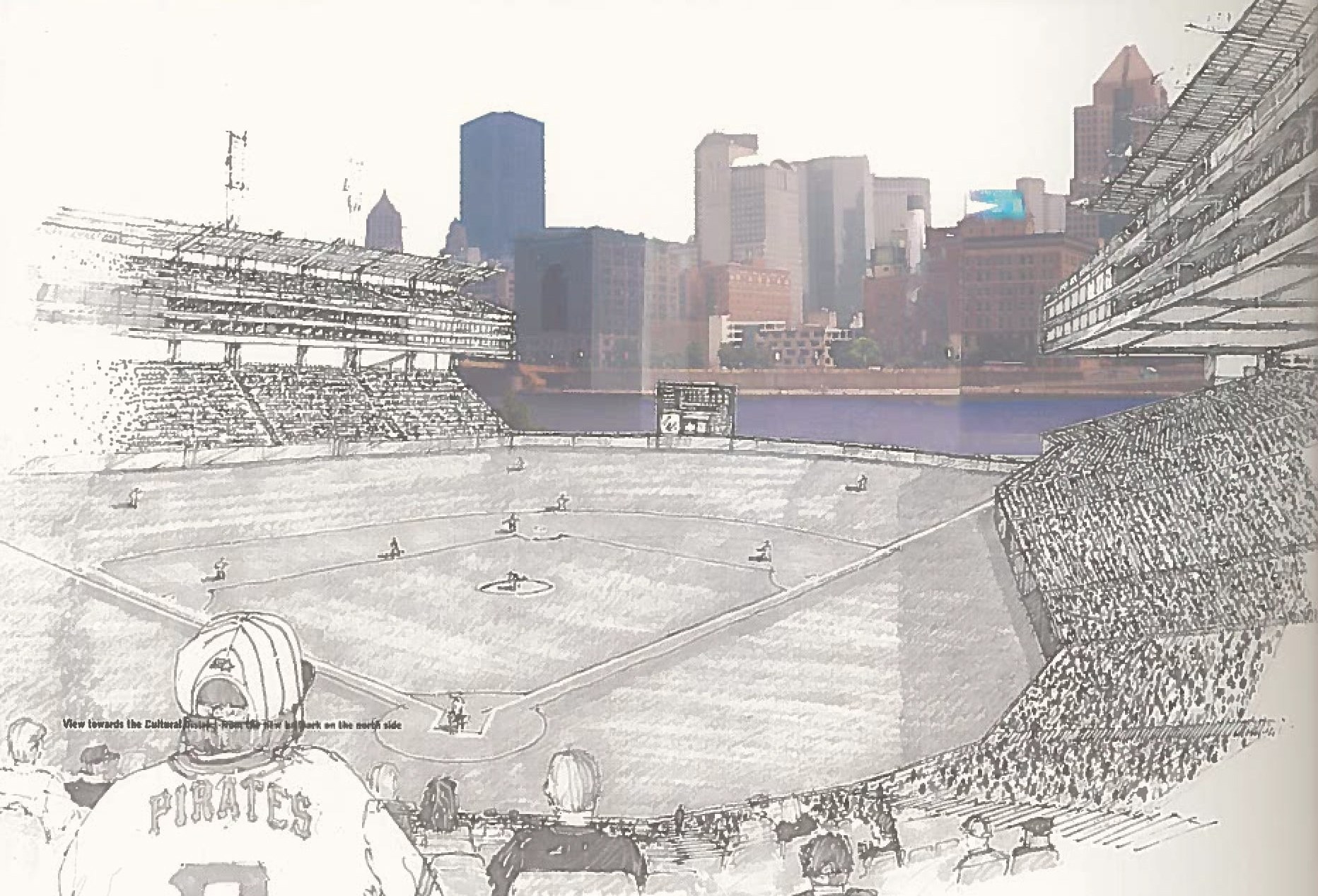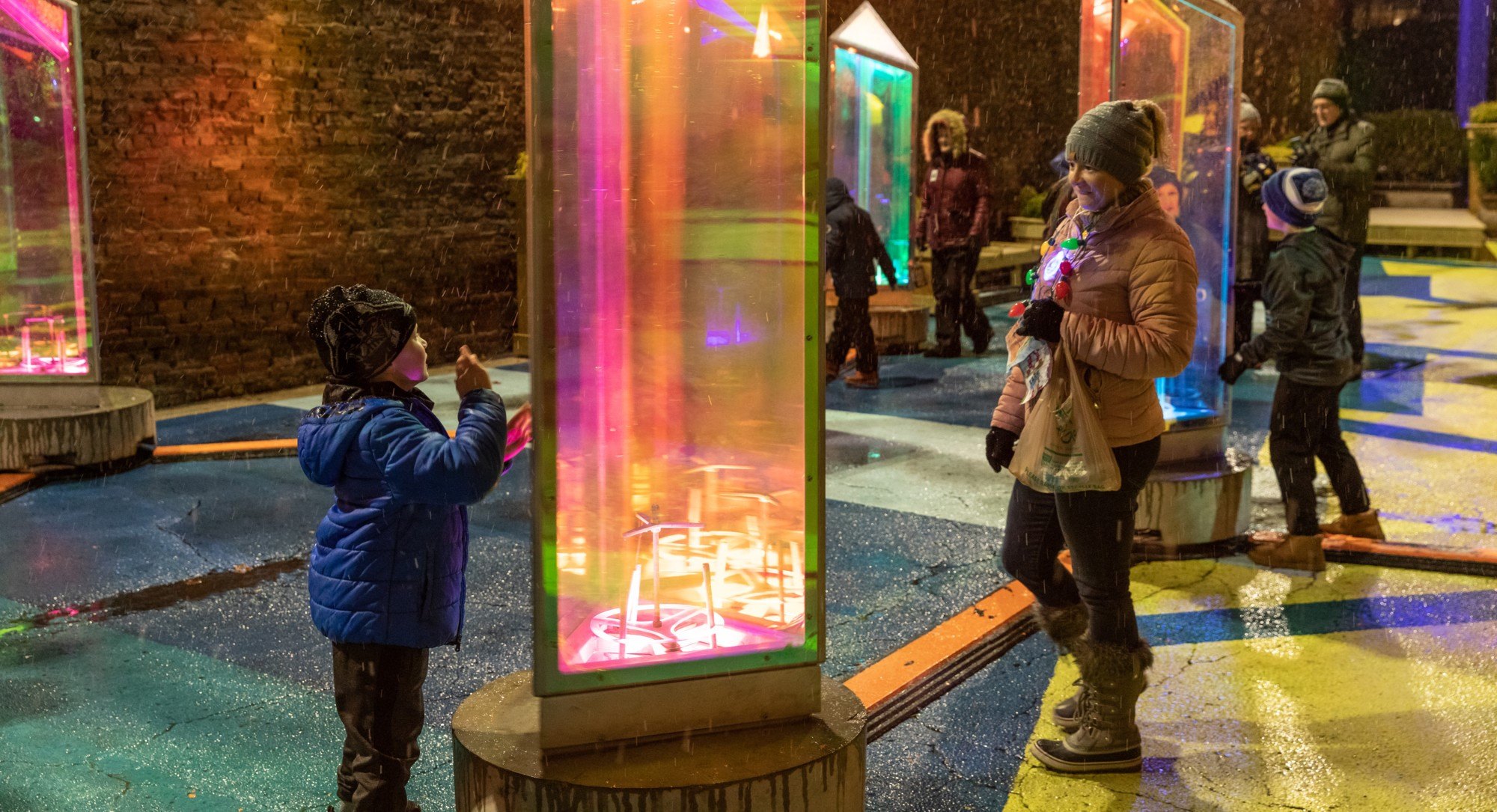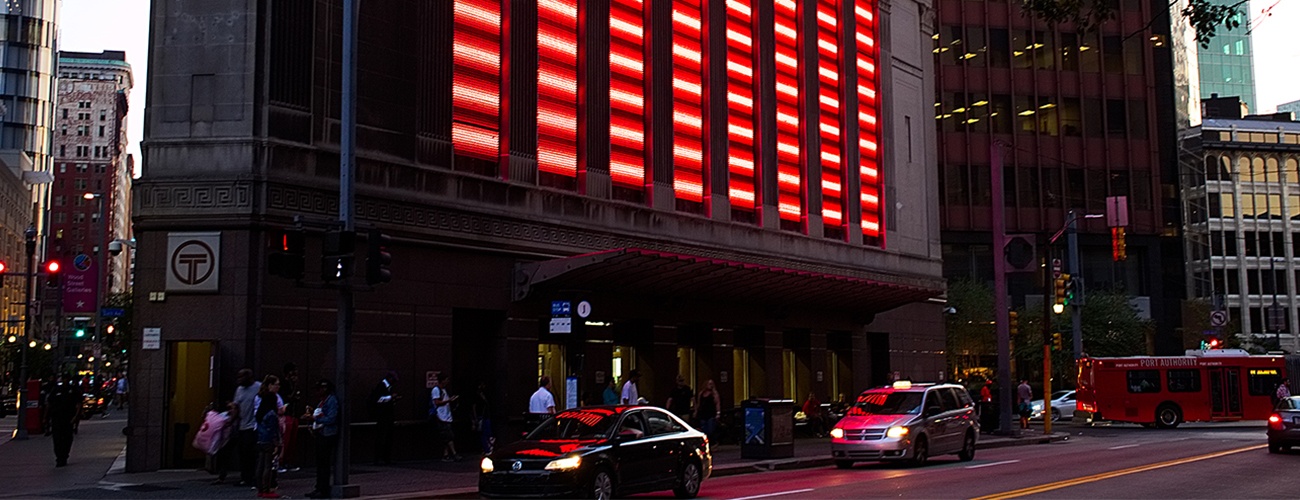Chances are you’ve noticed these light installations scattered in the Cultural District. There’s the illuminated billboard overlooking the Allegheny River, best seen hovering over PNC Park. There’s the massive LED fixture atop the Wood Street T-Station that brings a bright red glow in those cold, dark nights. There’s even the light fixture above Wood Street Galleries that sometimes bears resemblance to a face.
This is a story about how the Pittsburgh identity runs deeper than just Steel City.
With over 50,000 LED lights powering installations throughout the Cultural District, the city has, in its modern transformation, truly become a City of Light.
It all started in 1996, when a conversation in a two-week workshop in Watermill, New York, evolved into a decades-long urban revitalization effort for how the Cultural Trust could transform Pittsburgh. That effort being, to use light as a poetic medium to define the Cultural District.
Since then, light-based artists from around the world have turned to Pittsburgh as an urban incubation space. Austrian artist, Erwin Redl, built Flow, the iconic red structure above the Wood Street T-Station. Dutch/Slovenian collective, InformationLab, installed Cell Phone Disco in Tito Way, lighting up the alleyways Pittsburghers know and love. Wood Street Galleries, since its inception, has regularly invited renown light-based artists to transform their downtown gallery space.
Learn how these five Trust installations came to be and why they hold an indelible place in Pittsburgh’s heart.
Sign of Light
Fort Duquesne Blvd (between Stanwix St and Cecil Pl)
Art by Robert Wilson and Richard Gluckman

Our story begins at the towering billboard which has sparked many curiosities. It’s the installation that even scored an episode in 90.5 WESA’s Good Question! Series. It’s the Cultural Trust’s Sign of Light.
Sign of Light was constructed as a direct result of the aforementioned 1996 Watermill workshop.
Project leads, artist Robert Wilson and architect Richard Gluckman, envisioned the new Pittsburgh initiative with the following precepts:
Light will be the defining characteristic of the structural system.
Light will be the static and light will be dynamic.
Light will be the identifier.

In short, the duo imagined a structure that would effectively serve as the Cultural District’s marker point, an unofficial lighthouse that would steer the once downtrodden Pittsburgh into a new cultural center. Once built, Sign of Light became the Trust’s first ever installation and the honorary emblem for Pittsburgh’s City of Light.
Flow
Wood Street T-station
Art by Erwin Redl

Every day, from an hour before sunset until midnight, Flow turns on to brighten up the Wood Street T-station and its neighboring streets. It’s become a beloved fixture in the bustling concrete jungle that is Pittsburgh, but what many don’t know is the transformation the glowing monolith has gone through.
What we see now is actually the second iteration of Flow. As part of a 2001 group installation called AfterImage, it originally flowed upwards in one continuous loop and was only meant to stay installed for a temporary duration. The piece was so well received that the Trust decided to revive Flow, this time as a permanent installation.
And so in 2017, version 2 of Flow commenced its construction, built to be even more reflective of the architecture of the City of Light. “The red horizontal stratifications you see now,” explains Murray Horne, Curator of Wood Street Galleries “are actually meant to mimic the windowed architectural style of K&L Gates building right behind the gallery.”
Cell Phone Disco
Tito and Exchange Way
Art by InformationLab

Throughout the years, alleyways have served an indispensable role in many Pittsburghers’ lives. They’ve been sites of transport for the bustling pedestrians looking to save a minute or two. They’ve been sites for art, music and grub at our many Gallery Crawls. Now, they’re even becoming prime spots for some exciting art installations.
Tucked in on Tito Way is one such activation: the Cell Phone Disco. It’s a large, omnipresent 16’ by 16’ screen that dances erratically to the flow of cell phone usage, an homage to Pittsburgh in its 21st century modernity. In the daytime, the mirrored panels offer pedestrians passing moments of self-reflection. In the nighttime, the 2,034 LED lights take on an added purpose, as human digital activity brings light to the city, literally and symbolically.
168 Lightbulbs
Above Wood Street Galleries entrance
Art by Jim Campbell

Sometimes it looks like a face of sorts and other times it looks like an abstracted compilation of lights. So what exactly are we looking at?
Well, both.
What starts off as an abstraction of lights then slowly consolidates into the skull of Claude Shannon, the famous engineer and mathematician lauded as “the father of information theory”. Artist Jim Campbell, who was so influenced by Claude’s lifelong study of information, decided to memorialize him using an art-process inspired by the very field Claude founded. The process being, to strip away the quality of the image as a means of testing the limits of human perception (or as Jim calls it, low-resolution works).
All things considered, this would make a unique addition to your Pittsburgh trivia list.
Prismatica
Trust Oasis (133 7th St)
Conception and execution: RAW Design in collaboration with ATOMIC3
Production: Quartier des Spectacles Partnership, Montreal, Canada

Joining the Trust public art roster is a new kid on the block: Prismatica. It’s a completely new installation for Pittsburgh’s Trust Oasis space at 133 7th St. Beautiful colorful prisms illuminate the space and activate musical sounds as they are rotated around by passersby, evoking a feeling of colors dancing in harmony. Visually, it's a modern ice palace of sorts, a colorful addition that easily brightens up the wintry glooms. Metaphorically, it speaks to a city of acceptance, a sculpture that allows visitors to see city life as a constantly evolving spectrum of colors.
Prismatica is open to the public 8 a.m. to 8 p.m. daily at Trust Oasis for a limited time.
Want more? Join our email list!
Want to hear more about what's going on in the Cultural District? Sign up for the Pittsburgh Cultural Trust's mailing list.
